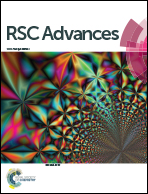Structure, morphology and catalytic properties of pure and alloyed Au–ZnO hierarchical nanostructures†
Abstract
A novel preparation of Au@ZnO and Au/Cd–ZnO structures is reported. The different morphologies of the two nanostructures are the result of either multiple or single nucleation events depending on the crystalline nature of the Au or Au/Cd seeds. Both samples are surprisingly active for CO oxidation and the water–gas shift-reaction (WGSR) despite the large size (6–8 nm) of the Au cores, and show interesting support effects when deposited on different oxides.


 Please wait while we load your content...
Please wait while we load your content...